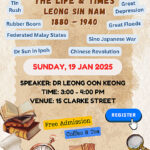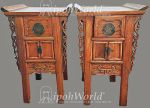Featured Video
These short clips courtesy of Filem Negara Malaysia show, in order of sequence: dulang washers; open cast mining and the use of a monitor; collecting the tin from the palong; transporting bags of tin to the smelter along the Kuala Kangsar Road; the finished ingots ready for shipment to New York from the Butterworth smelter; A series of clips showing the carnival procession through the streets of Ipoh to celebrate the declaration of Ipoh as a Municipality in 1962.
Featured Video
These short clips courtesy of Filem Negara Malaysia show, in order of sequence: dulang washers; open cast mining and the use of a monitor; collecting the tin from the palong; transporting bags of tin to the smelter along the Kuala Kangsar Road; the finished ingots ready for shipment to New York from the Butterworth smelter; A series of clips showing the carnival procession through the streets of Ipoh to celebrate the declaration of Ipoh as a Municipality in 1962.
















